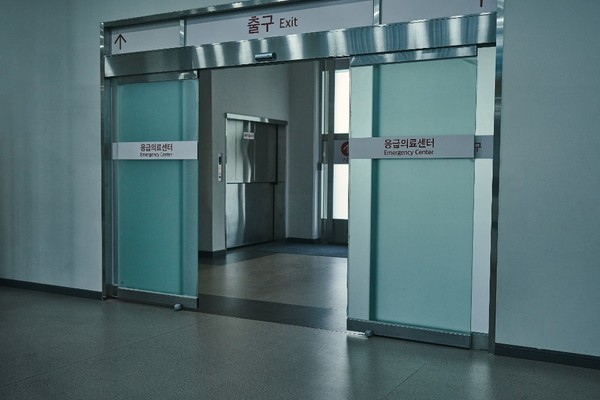As trainee physicians at Korea’s five largest tertiary hospitals walked out en masse on Tuesday morning in protest to the government’s medical school quota increase, senior doctors in emergency medicine are taking on additional duties, hospitals said. This could lead them to suffer burnout, putting the lives of urgent patients at risk, experts warned.

All interns and residents at the five hospitals -- Severance Hospital, Samsung Medical Center, Asan Medical Center, Seoul National University Hospital, and St. Mary's Seoul Hospital -- have ceased working as of 6 a.m. on Tuesday. In the emergency department, senior physicians are filling their positions and doing more on-calls to minimize the impact. However, if this situation persists over an extended period, treatment disruption becomes inevitable.
An official at Severance Hospital stated that senior doctors are attending to patients registered at the emergency room, similar to their actions during the 2020 general strike by trainee doctors.
"But if this disruption persists and senior doctors experience accumulated fatigue, I'm concerned that providing emergency care will become challenging," he said.
"I don't know how long this is going to last, because the government and the medical community are locked in such a fierce battle. I don't think there's anything we can do except to endure it."
The so-called “Big 5” hospitals with a substantial number of doctors are currently better positioned, but concerns are being raised that if the widespread resignation of doctors escalates nationwide, some medical facilities may face challenges in delivering critical care.
"It's a very dangerous situation because it's not only the emergency medicine specialists leaving (the hospital), but also other specialties leaving, and the emergency medicine department is bound to be affected," said a professor of emergency medicine at a university hospital.
Nevertheless, he pointed out that historically, Korean hospitals have managed to remain operational despite shortages of interns and residents.
“Of the 400 emergency departments in the country, only about 250 have trainee doctors. But I believe they can still offer emergency care. If the situation persists, however, they may encounter challenges in delivering critical care.”
Due to the general public’s anxiety over a possible healthcare crisis, patients with mild cases are making more visits to emergency departments, leaving patients at greater risk of medical error, he emphasized.
Emergency care doctors expressed anger regarding the Ministry of Health and Welfare's announcement of establishing a "physician collective action damage report and support center" to assist patients.
“Without interns, medical care functions at emergency departments are deteriorating, and with the exodus of residents, this country is expected to experience a national emergency medical disaster,” a group of emergency medicine specialists said.
In a statement, the Korean Emergency Medical Association (KEMA) asserted that the government has provided no alternative, highlighting the severe physical and mental strain experienced by health workers in the field.
"Starting today, chaos in emergency departments will only increase and patient frustration will grow. The physician collective action damage report center is blatantly encouraging people to report doctors," KEMA said.
They said they were outraged by the government's response to the doctors who remain to protect emergency patients.
“We will continue to fight tooth and nail to protect our members and reverse this misguided policy," KEMA said.
Related articles
- Quota war between doctors, government intensifies, leaving patients helpless
- Politicians call for ‘dialogue’ to resolve medical residents’ mass resignation
- Government pressures medical schools to disclose student information amid collective leave of absence protest
- Health ministry cites studies finding no basis for additional 2,000 medical students
- Korean MZ doctors mock health official's slip of the tongue with AI-generated bird images
- Potential exodus of Korean doctors as they pursue opportunities abroad amid dispute over medical school quotas
- Seoul restricts resigned trainee doctors’ foreign travel
- Seoul moves to fill junior doctors’ void with PA nurses, but hospitals say ‘No.’
- Doctor-turned-lawmaker reveals past salary to refute high-income claim
- Government rules out using oriental medicine practitioners to replace striking physicians
- Seoul fully allows telemedicine in response to striking physicians

